Retargeting Ads: Why and How You Should Be Doing it (and Tools to Help)
January 31, 2023 10 min read

If you’ve ever cruised a retail site, without buying anything, then seen the items you were looking at everywhere over the following days, you’ve been on the customer side of a retargeting advertising strategy.
Retargeting ads do exactly what they sound like: they target prospects a second time. It can feel like you’re having your mind read, but there’s actually a clear technological process to retargeting.
How Does Retargeting Work?
Using website cookies, companies are able to (anonymously) track visitors to their website, and then follow their movement around the internet, which enables them to target very specific ads to prospective customers, wherever they go.
So if you were looking at a pair of Birkenstocks on a retail site, then decided you didn’t want to make the purchase, you might find ads for those exact shoes, from that exact retailer, in the margins of the online magazine you’re reading or on your social media platforms.

Image credit: retargeter.com
And if you’ve ever bought something based on what you now know was a retargeting ad — so many of us have — you’ll understand how effective this kind of advertising strategy is!
With first-time website visitors generally maxing out at a 3% conversion rate, retargeting provides businesses with a way to increase brand awareness and recapture a potential customer’s lost attention.
Retargeting vs. Remarketing
Retargeting and remarketing are often confused, no doubt because they sound similar and mean similar things — but they don’t exactly mean the same thing.
Retargeting is an advertising strategy that refers to showing ads to previous website visitors while remarketing is the act of collecting contact information from prospective customers in order to send them outbound marketing campaigns.
When You Should Retarget Your Ads
Retargeting is considered a long-term strategy, meaning it’s most valuable for established brands whose websites get at least 100 unique visitors a month. If that’s you, here are some situations that are ripe for retargeting:
- Increasing brand awareness. The more a prospect sees your brand, and especially the items or services they were initially interested in, the stronger your presence will be in their mind.
- Boosting already-high sales. Popularity and bestsellers are part of a virtuous cycle, and retargeting (especially when using power words to excite FOMO) can help remind prospective customers to jump on something before it’s gone.
- Spotlighting slowly-selling products. If you have inventory that’s not moving quickly on its own, retargeting can be a great way to bolster those sales.
- Introducing new products or collaborations. Like brand awareness, this is about getting your new inventory out there and improving word-of-mouth sales.
Retargeting vs. Prospecting
When it comes to digital marketing, there are two key strategies that businesses use to reach their target audiences: retargeting and prospecting. These terms mean different things entirely and shouldn’t be confused as one.
Retargeting allows businesses to show ads to users who have already visited their website or interacted with their brand in some way. This is done by placing a piece of code, called a pixel, on your website that tracks users’ behavior. Once you have this data, you can then create ad campaigns designed to get them to return to your site and convert.
Prospecting, on the other hand, allows businesses to target new potential customers who have never interacted with their brand. This targets people based on demographics, interests, and behaviors. Prospecting can be an incredibly effective way to reach new customers and grow your business.
How Does Retargeting Fit into Your Marketing Strategy?
Picture this scenario. You see an item you want, whether it’s a new pair of shoes or a piece of furniture, and you talk yourself out of it. “I don’t need that. I have enough shoes/furniture already.”
Then, a few days later, you start seeing ads for that same item everywhere you go online. It follows you around like a lost puppy, and before you know it, you’ve clicked on the ad and made the purchase.
That, my friends, is the power of retargeting ads. This scenario isn’t far-fetched because about 70% of your audience who view your retargeted ads convert.
Here’s how retargeting can fit into your marketing strategy:
- Use retargeting to reach people who have already shown an interest in your product or service. The more times someone sees your ad, the more likely they will remember your brand when they’re ready to purchase.
- Use other marketing channels to generate interest in your product or service, and use retargeting to drive conversions from that interested audience.
- Use retargeting to keep your brand top-of-mind with people who may not be ready to convert immediately.
- Use retargeting to create custom audiences for more targeted campaigns.
- Use retargeting to test different messages and call-to-actions to see what works best with your audience.
How Much of a Budget Should You Allocate to Retargeting?
When retargeting ads, there is no one-size-fits-all answer for how much of your budget you should allocate. The amount you spend will depend on several factors, including the size of your target audience, the platforms you are using to reach them, and the objectives of your campaign.
That said, a good rule of thumb, according to AdTriba, is to allocate around 20% of your overall ad budget to retargeting and 80% to prospecting. This will give you enough resources to test different strategies and tactics and see what works best for your business.
You can then adjust your marketing budget accordingly when you have more resources at your disposal. Ultimately, the key is experimenting and finding what works best for you. There is no magic number when it comes to retargeting ads, so don’t be afraid to experiment until you find the right mix for your business.
Retargeting Best Practices
Here are some best practices to keep in mind when creating your retargeting campaigns:
1. Keep Your Messages Relevant
Ensure the ads you serve to your retargeting audience are relevant to their interests and previous interactions with your brand. Irrelevant ads are more likely to be ignored and can even damage your brand reputation.
2. Use Dynamic Creative
Dynamic creative is a tool that allows you to serve different versions of an ad to different people based on factors like their past behavior or demographics. This helps ensure that your ads are as targeted and relevant as possible, increasing the chances that they’ll be noticed and acted upon.
3. Consider Frequency
You don’t want to bombard your audience with too many ads, but you also don’t want them to forget about your brand altogether. Strike a balance by keeping your ad frequency at a level that’s neither too high nor too low.
4. Create Eye-Catching Ad Designs
Make sure your ads are well-designed and eye-catching. You want them to stand out from the rest of the online noise. Use strong visuals to grab people’s attention and make them want to learn more about what you’re offering.
5. Test
As with any marketing campaign, it’s important to test different aspects of your retargeting approach to see what works best for your business. Try different messaging, creatives, targeting criteria, and frequency levels to find what performs best with your audience.
When You Should Retarget Your Ads
Retargeting is considered a long-term strategy, meaning it’s most valuable for established brands whose websites get at least 100 unique visitors a month. If that’s you, here are some situations that are ripe for retargeting:
- Increasing brand awareness. The more a prospect sees your brand, and especially the items or services they were initially interested in, the stronger your presence will be in their mind.
- Boosting already-high sales. Popularity and bestsellers are part of a virtuous cycle, and retargeting (especially when using power words to excite FOMO) can help remind prospective customers to jump on something before it’s gone.
- Spotlighting slowly-selling products. If you have inventory that’s not moving quickly on its own, retargeting can be a great way to bolster those sales.
Introducing new products or collaborations. Like brand awareness, this is about getting your new inventory out there and improving word-of-mouth sales.
Retargeting Tools We Love
Once you’ve decided to retarget your ads, it’s worth investing in a tool to help you get the most out of your strategy. Here are some of our favorites:
AdRoll
AdRoll is the #1 retargeting tool on the market, with over a decade of experience and many thousands of users. With extensive functionality and tons of great metrics for tracking your success, AdRoll is an excellent tool for large-scale projects. It can take a bit of time to learn, but AdRoll provides plenty of educational content to get you over the curve.

Image Source: AdRoll
Meteora
Meteora uses geofencing for retargeting ads — this is the process of targeting ads based on a user’s geographical location, using data like cellphone GPS or Wi-Fi. This makes Meteora a great choice for small businesses looking to target local prospects, or any business looking to target a location-based demographic.
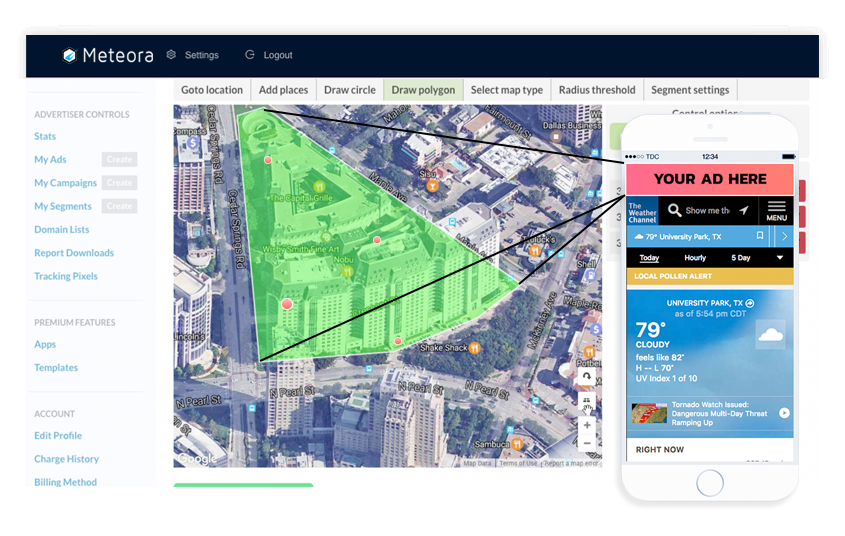
Image Source: Meteora
With 675 million users each month, LinkedIn has become one of the largest, most widely-used social networks in the world, and their retargeting tool is perfect for businesses whose customer base is other businesses (B2B) or professionals. Plus, it’s a pay-per-click (PPC) model, which means you’ll only pay if your retargeting ads are successful.
Criteo
Another popular PPC retargeting tool is Criteo, which promises to deliver users around 13x ROI via its machine learning-enabled content. From static images to video ads, Criteo’s software uses your customer data to craft personalized advertisements that are optimized to retarget each individual prospect.
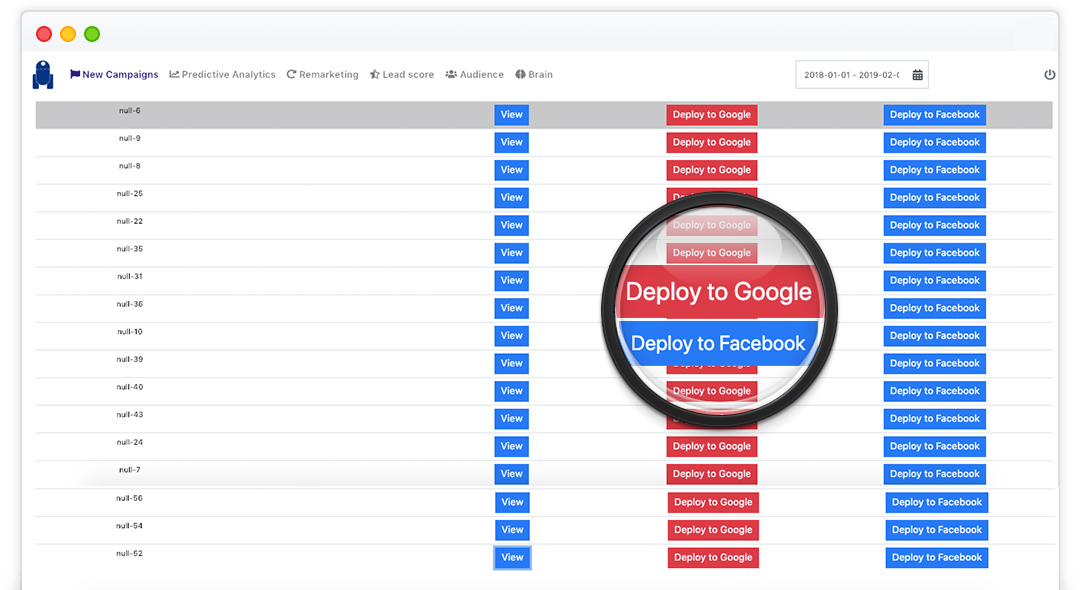
Image Source: Criteo
Google AdWords
Another extremely popular ad retargeting tool is the one built into Google Ads, which enables businesses to target users of any Google platform, including, of course, the search engine but also YouTube, Chrome, and Android phones. This is especially convenient if you’re already a Google AdWords user for other marketing or SEO strategies.
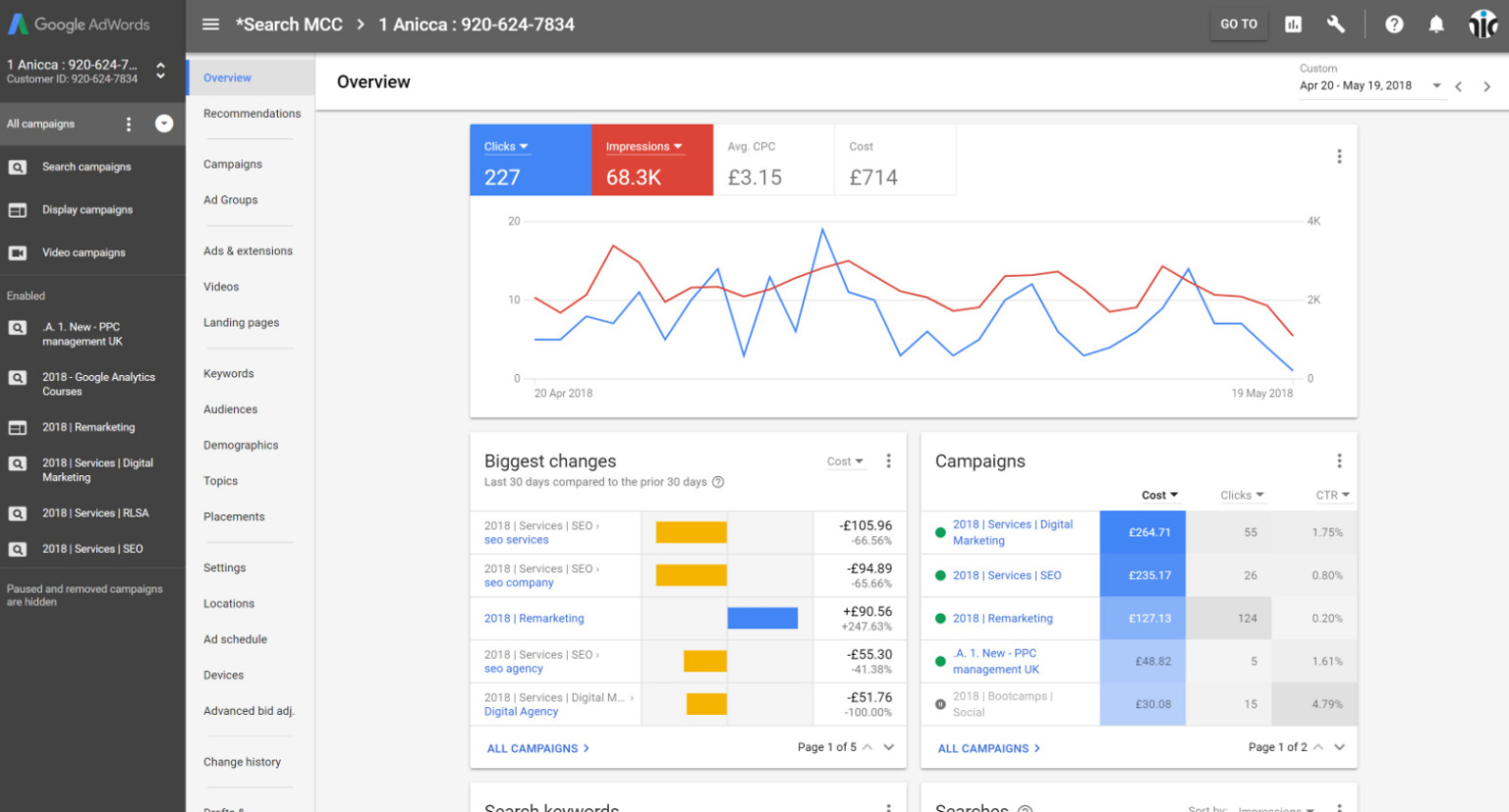
Image Source: Search Engine Watch
Facebook is the third most visited website on the Internet, so the advertising potential on their site is astronomical. Like Google’s built-in retargeting tool, Facebook Advertising has a tool called Custom Audiences, which enables you to retarget any Facebook user who’s interacted with your business — both on your Facebook page and outside the platform, on any website where you’ve added the required pixel.
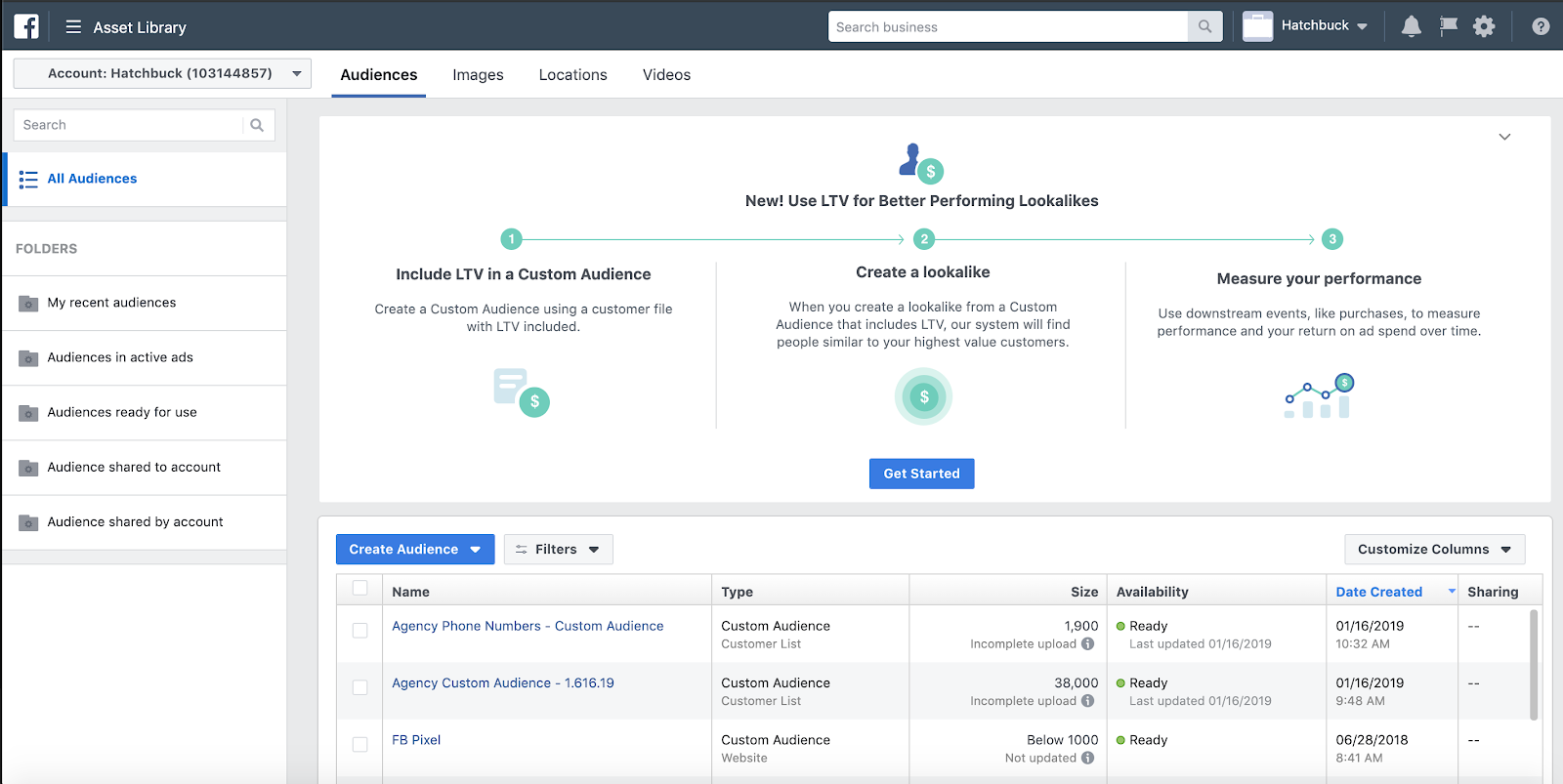
Image Source: Facebook
SharpSpring
SharpSpring Ads (formerly Perfect Audience) is our absolute favorite retargeting tool, which is evidenced by the fact that we use their services for our own business (full disclosure). But we recommend SharpSpring because we love them, not because they’ve asked us to (they haven’t).
The best thing about SharpSpring’s retargeting tool is the width of its reach: not only do they place ads across the wider Internet, in banners and sidebars, but they also cover social media platforms like Facebook and Twitter, to extend your audience.

Image Source: SharpSpring
SmarterHQ
Another smart tool, SmarterHQ, uses advanced behavior analysis to help you get the most out of your retargeted ads. By analyzing the way that users engage with your ads, the platform provides you with tools to engage across multiple platforms to make sure that they see your ads at exactly the right time to land the conversion.
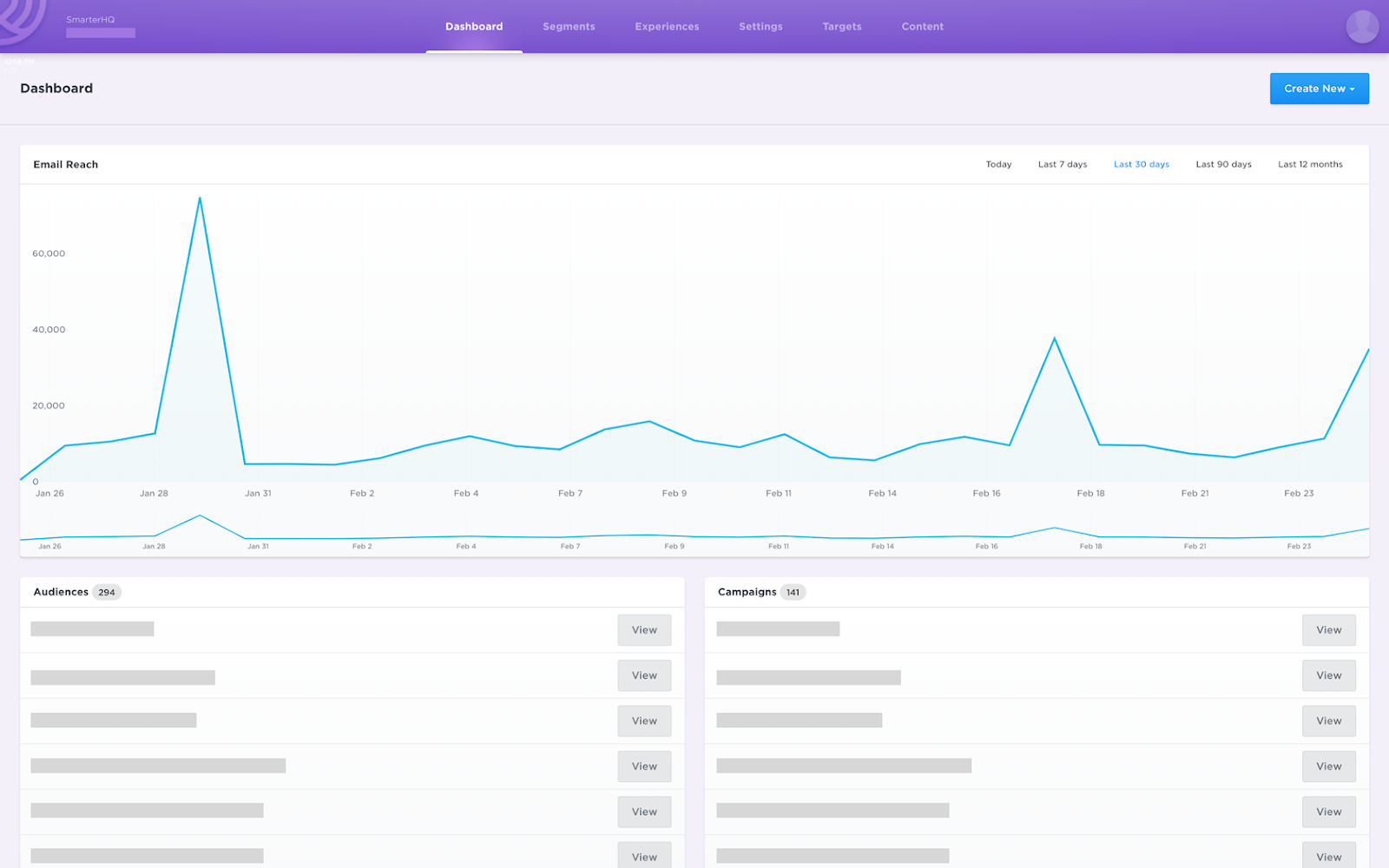
Image courtesy of SmarterHQ
Of course, we can’t cover every possible tool out there — so if you’re looking for something super-specific, check out software review sites like G2Crowd or Capterra to see what other people are using and find the perfect solution to fill those gaps.
Retargeting Campaign Examples
Here are some examples of retargeting campaigns that some businesses have used successfully:
1. Spotify
Spotify uses retargeting ads to encourage freemium users to upgrade to the pro packages. Customers will likely take this offer because the introductory price to the premium packages comes with a discount.
2. Expedia
Expedia uses retargeting ads to target users who had visited the site but did not book a trip, specifically targeting those who had searched for flights but did not book them. The ads offer discounts on airfare and hotel rates, which significantly increased bookings for the company.
3. Wayfair
Another excellent example of a retargeting campaign is from online home goods retailer Wayfair. In this case, the company retargets shoppers who visit their website but do not purchase, specifically serving ads for products they viewed but did not buy. The results were impressive, with increased sales and revenue per visitor.
Using retargeting ads is a highly effective way to increase conversions and sales. By targeting the people who have already visited your site or shown interest in your product, you can dramatically improve your chances of getting them to take the next step and make the decision to buy something from you.



